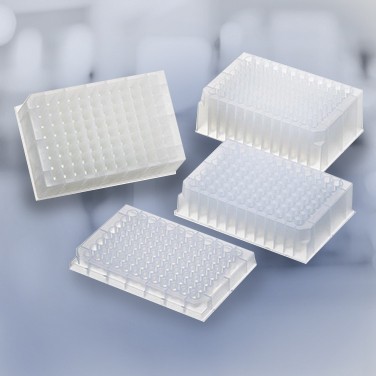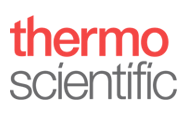Want to replace your glass autosampler vials with plastic well plates?
Thermo Scientific WebSeal well plates and mats are designed for today's chromatographer and backed by decades of experience. You’ll get all the advantages of sample handling using plates with the assurance of reliable results. Use these questions and answers to find the right WebSeal plates and mats for your chromatography requirements.
Q: Can WebSeal well plates and mats be used on Tecan, Hamilton, and other automated liquid handling systems?
A: Yes, WebSeal microplate products comply with formats specified by the Society for Biomolecular Screening (SBS). Refer to the equipment operating manuals for equipment from Tecan, Hamilton, Gilson, PerkinElmer, and other manufacturers.
Q: Have WebSeal mats been tested for evaporation?
A: Yes, the mats have been subjected to gravimetric or chromatographic evaporation tests. Gravimetric testing shows that volatile solvents are retained over periods from hours to days. Chromatographic evaluations demonstrate repeatability of low-concentration standards over typical chromatographic analytical cycles.
Q: What are the temperature limits for WebSeal microplate products?
A: WebSeal polypropylene (PP) microplates and silicone mats tolerate a wide range of temperatures:
- As low as -80°C, including storage in cryogenic conditions
- Up to 121°C for a maximum of 15 minutes for sterilization by autoclave
- 100°C for up to seven days of continuous heating
Q: Are WebSeal plates compatible with protein and bioanalysis matrices?
A: WebSeal plates are not compatible with ELISA and other fluorometric or luminescent assays or measurements. However, they can be used to collect samples of peptides and other biomolecules following separation on Bio-LC or SEC systems. They are also suitable for samples progressing to HPLC systems. Other plate choices may be more suitable for non-chromatographic techniques.
Q: Are WebSeal products compatible with GC-MS?
A: Yes, WebSeal products are made from plastics that have low levels of additives. Plasticizers and nucleation agents that are added to some plastics can cause background contamination that interferes with GC and GC-MS applications.
WebSeal silicone mats have been extensively evaluated for purity and performance. The resins have also been tested for chromatography suitability using methanol, acetonitrile, and n-heptane. Visit thermofisher.com/webseal for the published conditions used to create extractables testing (temperatures, detectors, sensitivities, and other conditions) to help you determine whether specific products are suitable. In many cases, we can recommend our products for GC as well as HPLC applications.
Q: Are certified plates preferred over standard plates for use with organic solvents to prevent “bleed?”
A: When using high concentrations of organic solvents in your samples, “bleed” refers to the constant loss of material from the column or separation system that can cause high background levels, increased noise, and loss of sensitivity.
- Plastic leaching is not typically a concern when plates are used with very dilute aqueous solutions or buffers.
- The plastic resins used in WebSeal plates were evaluated using a controlled extraction of leachable components with methanol, acetonitrile, hexane, and other organic solvents associated with HPLC and GC.
- Standard plates showed low levels of extractables when tested using the highest instrument sensitivity. These extractables are the same ones commonly found in microplates used for clinical or general-purpose chromatography applications. For many non-critical applications and higher sample concentrations, standard quality plates, termed “Chromatography Tested” are acceptable.
- Certified plates are made with the lowest extraction polypropylene currently available in the world and produce very low background extractable levels. Use certified plates for assays run at more sensitive instrument settings or where higher plate purity is required.
Q: How do WebSeal-certified low-bleed plates compare to others?
A: WebSeal-certified products are manufactured from high-purity resins using a process that does not require chemical agents for injection mold release. These release agents can show up in your chromatograms. Also, our polypropylene resins do not contain monomers or other components that are susceptible to leaching when used with organic solvents.
Q: How do WebSeal Plate+ products compare to standard and certified products?
A: WebSeal Plate+ coatings provide surface protection that further reduces interactions with solvents, sample components, or other materials. WebSeal Plate+ microplates display ultra-low background extractable organics profiles that compare favorably to mass spectrometry certified vial products.
Q: What is the best way to seal a WebSeal Plate+ or plates with glass or PTFE inserts that must be incubated at elevated temperatures?
A: Use silicone mats with WebSeal Plate+ products, and preferably silicone with a protective PTFE film for increased chemical protection. For glass-insert plates, use specific silicone plug mats or individual caps.
These plates, inserts, and mats can be safely used at elevated temperatures with the inserts and plugs and are the closest equivalent to glass autosampler vials.
Never use tapes or adhesive foils to cover WebSeal Plate+ or plates with glass or PTFE inserts.
Q: Are bar-coded plates available?
A: Yes, but as an accessory for Thermo Scientific Vanquish UHPLC instruments only. However, plates can accommodate pre-printed adhesive labels. Contact your Fisher Scientific sales representative to request special labeling or barcoding.
Thermo Scientific WebSeal Plate+ second generation products have a higher density coating (200Å thickness), improved solvent stability, and better reproducibility. They offer the benefits of plastic plates with the features of glass plates at a lower cost.
Visit fishersci.com/thermochrom or fishersci.ca/thermochrom to learn more.




